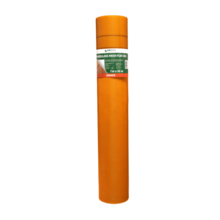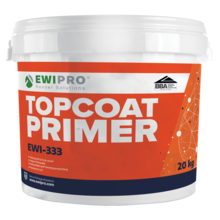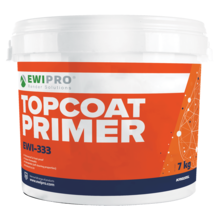
What is ICF?
ICF is a modern method of construction and is becoming increasingly popular in the UK. ICF stands for Insulating Concrete Form. It is essentially a set of hollow foam blocks that are stacked into shape, reinforced with rebar steel and then filled with concrete.
These blocks work to increase the thermal capabilities of the insulation system, whilst creating a stable wall structure that is airtight and energy efficient.
Once the ICF structure has been installed, it should be finished with a Silicone Render. Below, we have created a handy buyers guide to equip you with all the knowledge you will need to understand the ICF system installation process.
1. Applying the Beading for ICF
A key component of the rendering onto ICF construction process is beading. This works to reinforce certain external wall areas that are more prone to damage than others.
The beads that will be required will depend on the areas that need reinforcement. For example, corners, doors and windows.
At EWI Store, our wide selection of render beads allows you to choose the perfect beading for your property. Our beads are uPVC and are designed to be embedded in the basecoat layer.
2. Preparing the Basecoat
When applying Silicone Render to ICF, we highly suggest the use of the EWI-225 Premium Basecoat. EWI-225 is our strongest basecoat, which will protect the ICF blocks once cured.
Simply use a paddle mix to mix the dry mix bag with 5.9L of water. Each bag of EWI-225 has coverage of 3.5m2, and a drying time of 24-48 hours.
3. Applying The Basecoat & Embedding The Mesh
Using a 10mm notched trowel, apply the basecoat to the ICF substrate. From there, embed fibreglass mesh to create the reinforced flexible basecoat layer. This layer reinforces the system with a strong, flexible and waterproof base.
At EWI store, we offer two high strength meshes to suit your individual project’s needs. Both meshes are coated with acrylic acid copolymer liquid for a long-lasting effect. Below is a breakdown of each mesh’s capabilities:
1) Orange Fibreglass Mesh: For guaranteed strength and flexibility. This mesh is water resistant
and protects against alkali damage and aging. 1 x 50m2 roll covers 42.5m2 when overlapped.
2) Panzer Fibreglass Mesh: Our strongest mesh available guarantees a premium level of impact
and crack resistance. Excellent protection against the elements. Each 25m2 roll will cover 22.5m2 when overlapped.
4. Priming the Basecoat
Priming the basecoat helps aid adhesion between the basecoat and the render and also limits absorption to the basecoat ensuring the render can cure correctly. Our EWI-333 Topcoat Primer is designed specifically for this purpose and can be tinted to match the colour of your silicone render.
EWI-333 has a drying time of 12-24 hours, depending on the coverage. Its coverage rates are listed
below:
- 7kg = 20m2
- 20kg = 60m2
5. Applying Silicone Render to ICF
The final step in the rendering onto ICF process is to apply render once the Topcoat Primer has dried.
Since most of our renders are thin coat renders, the thickness of the topcoat depends on the grain size of the render. For example, the available grain sizes for EWI-075 Silicone Render are 1mm, 1.5mm, 2mm and 3mm. If you were to purchase the 2mm Silicone Render, your topcoat should be applied no thicker than 2mm.
Render should be applied using a trowel. Any excess render should always be removed. Use a plastic float to apply the render in a circular motion for your desired finish.
Below are the coverage rates you can expect from each grain size:
- 1.0mm = 12m2 - 13m2
- 1.5mm = 9m2 - 10m2
- 2.0mm = 7m2 - 8m2
- 3.0mm = 5m2 - 6m2
Download our Complete Guides
All products mentioned are available in the EWI Store. If you have any further questions, our Sales team will be happy to assist on 0203 034 00 22.
You can download a copy of our complete guide below.




